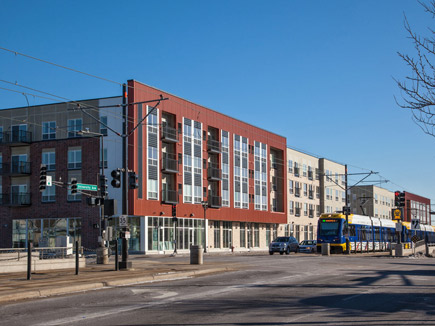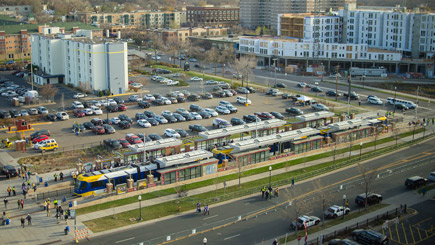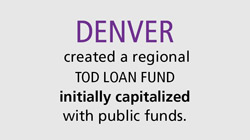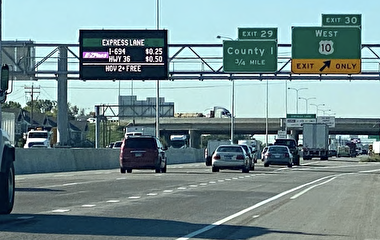Many policymakers support transit-oriented development (TOD) for its potential to direct regional growth into a more efficient and sustainable pattern. However, the ability to achieve this public goal is largely dependent on private-sector decisions.
“The governments and agencies with the greatest desire for TOD have little ability to implement it through their own actions,” says Andrew Guthrie, a research fellow at the Humphrey School of Public Affairs. “Conversely, the private-sector entities whose actions are needed to implement TOD may not share a city’s or regional planning body’s goals for transit-oriented growth patterns and built forms.”
This fundamental difference in perspectives demands creativity from planners and regional policymakers. In a new study, Guthrie and Associate Professor Yingling Fan explore how the public sector can best overcome these obstacles and encourage TOD at a regional scale. “Previous research has focused primarily on the impacts and benefits of TOD, not on how to accomplish it in the real world,” Guthrie says. “Our project helps fill that need.”
The researchers began by conducting in-depth interviews with staff of TOD programs around the nation, as well as of larger transit agencies and organizations responsible for TOD. Then, they assessed program goals, structures, and outcomes; analyzed interview transcripts for recurring concepts and shared understandings; and created typologies of the TOD programs. Additionally, a set of case studies was developed to add context from regions with more experience in TOD creation.
Several common themes emerged from the interview analysis. First, the researchers found that changing lifestyle preferences, particularly among millennials, present new opportunities for TOD. They also learned that well-established mechanisms are important for regional coordination, and that clear goals are needed for TOD programs.
In addition, transit service type and quality are critical to TOD prospects and success. “Fixed guideway transit in general—and rail transit in particular—is seen as providing the strongest opportunity for TOD,” Guthrie says.
Finally, they discovered affordable housing could be a natural ally of TOD under the right circumstances. “For example,” he says, “in a station area not yet home to rapid growth, quality affordable housing can represent a publicly funded catalytic development—it guarantees occupancy and creates a functional transit-oriented community through high transit use rates.”
The greatest overarching conclusion? There are no silver bullets—no single strategy or simple set of strategies will make system-level TOD easy or quick to achieve. “If there is a single conclusion to be drawn from this research, it is the importance of persistence,” Fan says. “Regions with high degrees of success in system-wide TOD implementation have been at it for decades. They also have consistently funded TOD efforts, whether in terms of planning grants, supportive public infrastructure provision, or direct loan and grant financing.”
Beyond this, the researchers propose three key recommendations:
- Focus on public investments that attract private dollars.
- Maximize the effectiveness of constrained public resources by timing investments around new transit expansions.
- Build durable structures for interagency and interjurisdictional coordination.
“The recommendations are useful guidance to help the public sector be the most effective in achieving TOD goals,” says Lucy Galbraith, TOD director at Metro Transit. “Governments working collaboratively and making strategic investments in infrastructure within the region will, given enough demand, allow a region to grow great neighborhoods supported by transit.”
The project was funded by the Transitway Impacts Research Program.





